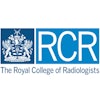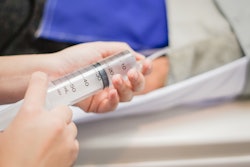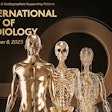The Contrast Media Safety Committee (CMSC) of the European Society of Urogenital Radiology (ESUR) has updated its practice guidelines on the management of hypersensitivity reactions (HR) to contrast media in two parts.
HRs to contrast media are infrequent and most are mild, but they can be severe and even life-threatening on very rare occasions. Treatment can vary widely based on staff knowledge and availability of drugs and equipment. Therefore, establishing a protocol to manage and treat HR is important, noted Dr. Aart J. van der Molen, secretary of the CMSC, and colleagues in European Radiology on 27 May.
In Part 1 of these updated guidelines, the authors used the American College of Radiology (ACR) classification for HRs to contrast media that has been previously adopted by the ESUR in developing its guidance. They performed an extensive literature review and classified HR in the two common subgroups: immediate hypersensitivity reaction (IHR) and nonimmediate or delayed (NIHR).
The guidelines were developed with input from two consultant allergologists (specialists who diagnose, treat, and study allergies and related immune system disorders) from the Netherlands and Spain, both of whom have extensive experience in guidelines on contrast media in their own countries.
The guidelines elaborate on the appropriate treatment for all types of HR, with the most frequent drugs used for both listed, as well as important considerations in their use (e.g., that autoinjectors may be preferred for administering adrenaline as opposed to intramuscular injection for severe HR). Advice for patients is also covered: patients given sedating H1 antihistamines may need to be informed not to drive; those who have previously had an NIHR are at higher risk of having another one, often manifesting as a skin reaction.
It is important for staff to recognize early warning signs of an IHR, such as erythema, rash, increasing heart rate and respiration, and loss of blood pressure, the authors stated. In comparison, an NIHR may present with nonspecific symptoms but can follow some patterns: “Skin rashes, skin redness, skin swelling, and headache are the most frequent symptoms of a true NIHR,” wrote van der Molen, an abdominal and emergency radiology specialist at Leiden University Medical Center in the Netherlands, and colleagues.
Close patient monitoring is critical, and the reaction’s progression must be assessed continuously during treatment, they emphasized. Staff must thoroughly document the HR in the patient’s records, offering an outline for what to include, such as specifics of contrast media administration (e.g., date and time, specific name, and dose), the type and severity classification of the HR, all available patient symptoms and vital signs, treatment, results from any consultation and follow-up with drug allergy specialists.
Given the potentially emergent nature of IHR, it is critical that radiology staff be prepared to recognize and treat them, according to the authors. They urge that staff have immediate access to clear treatment instructions, supplies and medications, and a resuscitation trolley with emergency equipment, as well as to have a rapid response team available. Regular training is vital, including hands-on simulation training programs.
 Flowchart showing guidance for therapy for immediate hypersensitivity reactions to radiology contrast media.Source: CMSC of the ESUR and European Radiology
Flowchart showing guidance for therapy for immediate hypersensitivity reactions to radiology contrast media.Source: CMSC of the ESUR and European Radiology
In Part 2 of the guidelines, the authors have published recommendations aimed at the prevention of recurrence of HR, with the help of an allergologist. In this part, they offer specific management strategies, including the employment of different contrast agents, selected through allergy assessment, and in some instances, using an alternative imaging modality.
You can read both parts of the updated CMSC guidelines for HR in European Radiology, on management of IHR and NIHR, and on guidance for the prevention of recurring HR.
Also, coming soon in the European Journal of Radiology is: "Allergological evaluation of hypersensitivity reactions after administration of contrast agents: What the radiologist needs to know," by Francisco Vegaa, Aart J. van der Molen, Maria Ruiz-Calatayuda, Aitana Alberdia, Maria Cataláa, Carlos Blanco-Motac, Annick A.J.M van de Vend, José J. Lagunae, and Carmen Sebastiaf.



















